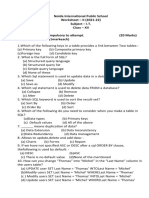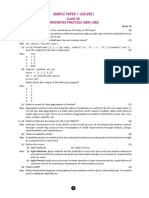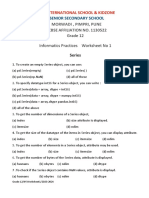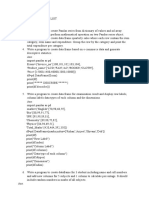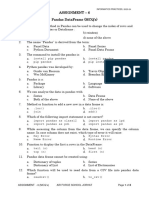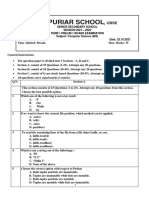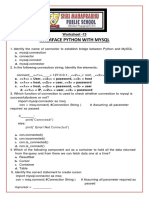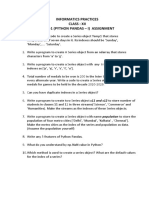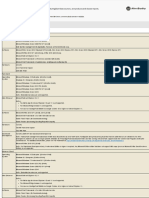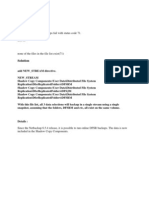0% found this document useful (0 votes)
725 views4 pagesPandas Questions
Pivoting reshapes or summarizes a dataframe organized by index or column. Pandas' pivot() and pivot_table() functions support pivoting.
The code creates a dataframe from a list with student IDs, names, and marks as columns. Another code sample creates a dataframe from a nested list with 'a' and 'b' columns.
Code is provided to create dataframes df1 and df2 with integer values, perform addition, subtraction on them, rename columns and indexes.
Further code creates a Series object with daily temperatures, displays first/last 3 days' temperatures and average temperature. It also prints Series description.
Two final code samples create a Series for a 5x table and
Uploaded by
niranjana binuCopyright
© © All Rights Reserved
We take content rights seriously. If you suspect this is your content, claim it here.
Available Formats
Download as PDF, TXT or read online on Scribd
0% found this document useful (0 votes)
725 views4 pagesPandas Questions
Pivoting reshapes or summarizes a dataframe organized by index or column. Pandas' pivot() and pivot_table() functions support pivoting.
The code creates a dataframe from a list with student IDs, names, and marks as columns. Another code sample creates a dataframe from a nested list with 'a' and 'b' columns.
Code is provided to create dataframes df1 and df2 with integer values, perform addition, subtraction on them, rename columns and indexes.
Further code creates a Series object with daily temperatures, displays first/last 3 days' temperatures and average temperature. It also prints Series description.
Two final code samples create a Series for a 5x table and
Uploaded by
niranjana binuCopyright
© © All Rights Reserved
We take content rights seriously. If you suspect this is your content, claim it here.
Available Formats
Download as PDF, TXT or read online on Scribd
/ 4


